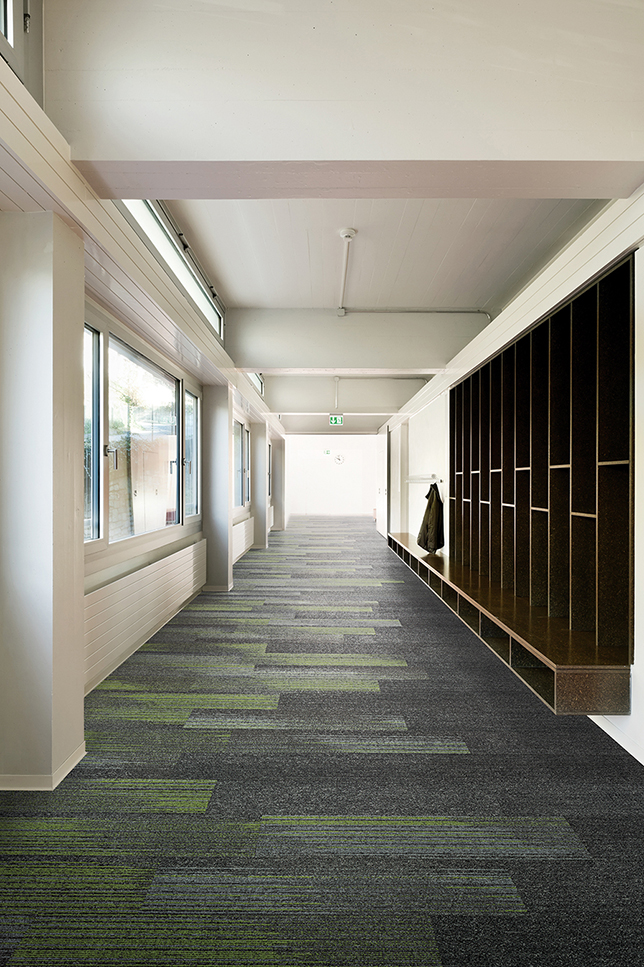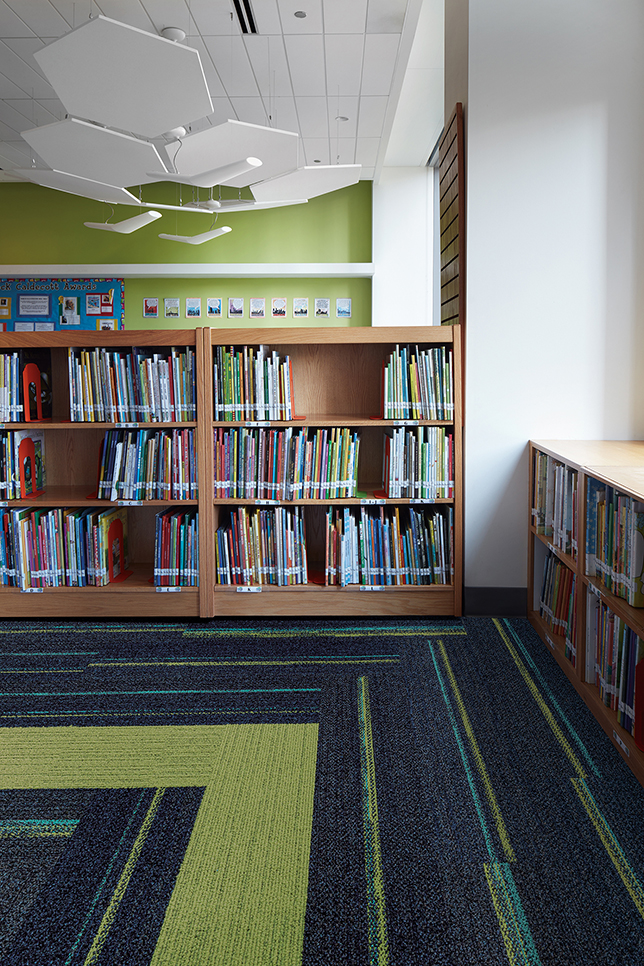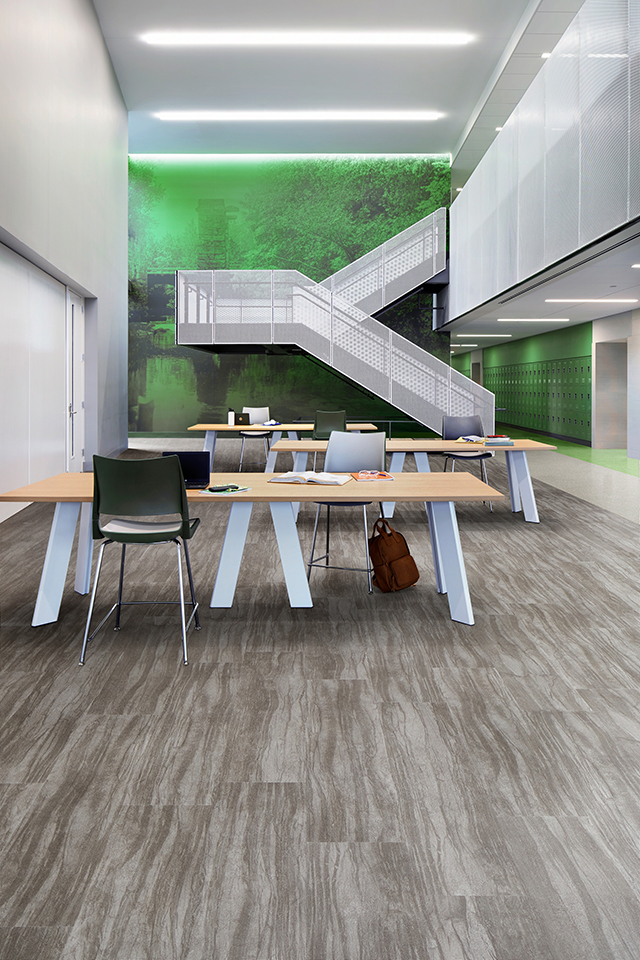Improving Test Scores & Student Well-Being: Why Education Facilities Should Prioritize Biophilic Design
By Paula Meason
It’s said that an investment in education is an investment in the future. Today's students are tomorrow's doctors, lawyers, engineers, and teachers. According to the most recent data, the U.S. spends around $19,380 per pupil, the second-highest rate of any OECD country. Despite this substantial investment, students continue to underperform in key subjects like math compared to countries of similar economic status.
Historically, education funds have focused on what we teach, how we teach, and who teaches it, but what about where we teach?
The Link Between Physical Environment & Well-Being
As design professionals, we know the impact our physical surroundings can have on occupants – open spaces can inspire a sense of grandiosity but create a lot of noise, certain colors feel calming while others build excitement, curved lines soften a space while straight lines add intensity. These are all well-known tenants of design, but only in the past few decades have we used science to support these claims. Developments in environmental psychology have enabled designers and scientists alike to better understand how our physical surroundings can shape our health and behavior – for better or for worse.
A 2019 survey of over 20,000 U.S. high-school students found that 74% of students reported negative feelings associated with the school environment. The top three descriptors were “stressed,” “bored,” and “tired.” The negative impact of stress on students has been shown to impair cognitive function, memory, and informational processing, with lack of sleep and boredom producing similar effects.
The learning environment must be considered part of the educational puzzle to fully take advantage of the investment made in students.

Images courtesy of Interface, Inc.
An Environment for Learning
If current school environments invoke negative emotions, we need to focus on designing spaces that inspire positive ones. And for that, design already has an answer: biophilia.
The concept is simple – humans, like all animals, need a connection to nature. The outdoors is our natural habitat, but modern living has moved us to spend most of our time indoors, severing that natural connection. Biophilic design focuses on reestablishing that connection by weaving elements of nature into interior spaces through design. More a philosophy than an aesthetic, it consists of 14 principles that can be applied to all aspects of a design, from building with the natural landscape in mind to specifying products made of natural materials to incorporating decorative elements like art and carpet patterns that nod to nature.
The Benefits of Biophilia
There is a growing body of evidence that supports the efficacy of biophilic design both within and outside of the educational space. One of the first biophilic studies, conducted by Robert Ulrich in 1984, focused on healthcare environments. His experiment found that patients with views of nature had shorter post-operative stays, used less pain medication, and had fewer negative comments about their stay when compared to patients without natural views. Since Ulrich’s experiment, more research has been done to measure the effects of biophilic design in other environments, including offices, senior care facilities, and educational environments.
The Green Street Academy is a charter school in Baltimore, Md., that serves low-income families in the area. In 2019, they were the subject of an experiment for biophilic design in schools. The academic performance, stress levels, perceptions, and testing scores of two math classes were compared over the course of a semester. One classroom introduced a number of biophilic elements to the class environment, while the control classroom maintained a typical classroom setting.
The results of the experiment were eye-opening. Students in the control classroom were almost twice as likely to report high levels of stress compared to those in the biophilic classroom. These reports were backed up by measuring students’ heart rate variability (HRV), a known metric for measuring stress. Not only did students in the biophilic classroom experience lower rates of HRV overtime, indicating declining levels of stress, but students in this class also experienced improved rates of HRV decline over the course of the day, indicating that not only was the biophilic classroom less stressful, but it also helped reduce stress levels better than a typical classroom environment. Teachers also reported feelings of decreased stress and anxiety and improved feelings of calm, which they reported made them better at teaching.
When it came to academic results, the students in the biophilic classroom experienced 3.3x the average test score gain compared to the control students. At the end of the seven-month study, 7.2% more students in the biophilic classroom tested at grade level than control students.

Barriers and the Path Forward
Clearly, there is a solid case for incorporating biophilic design to support academic goals. However, when biophilic projects are showcased in magazines and trade publications, they often feature splashy, multi-million-dollar renovations. While visually stunning and undoubtedly effective for students, projects of this scope are out of reach for most schools, especially those serving low-income families.
We often think of biophilia as part of the initial architectural planning process, but incorporating biophilic elements doesn’t have to mean new construction or a complete remodel of existing facilities. Biophilic design is a flexible and scalable way to enable student success. Interiors also do not need to be completely biophilic to see results. Simply adding indoor plants or playing nature sounds in the classroom have been shown to yield student improvement.
For A&D professionals, it’s not only important to present clients with solutions but also to ensure that those solutions are obtainable. Evidence and data don’t mean much if the funding isn’t there.

Here are a few ways to implement low-cost biophilic design in existing educational spaces:
- Specification: Natural analogs is one of the categories of biophilic principles that deals with evoking the feeling and familiarity of nature through patterns, forms, colors, and use of materials. Using these traits as parameters when specifying materials like flooring is a simple way to incorporate biophilia during the planning process and on an ongoing basis during designing.
- Use What is Available: Biophilic design is not only bringing nature inside the space but connecting space with the nature that surrounds it. Views of the surrounding landscape and the landscape itself are resources a school already has. Students can even be included in efforts to improve the landscape by creating gardens or window boxes.
- Educating Teachers: Classroom décor is a large part of a teacher’s education style, and there are many ways that biophilic principles can be incorporated, such as adding indoor plants, water fountains, hanging nature-inspired art, using nature-inspired flooring solutions and pillows made with natural materials, etc. Informing clients of the power of biophilic design and how they can incorporate it within a space is an important part of good design.
Investing in our education system should start with the very spaces we use for learning. Incorporating biophilia into the classroom helps bring new life to facilities and leads to better academic performance. The return on investment is clear – it's time to harness the power of nature to create better educational environments for every student.
Paula Meason is currently the Education Segment Expert & Strategy Lead at Interface for Interface Americas. In her 20+ year career, Paula has proved a resourceful and versatile marketing professional with a demonstrated track record of achievement in brand management and top-line growth.